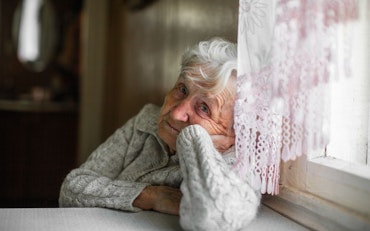Likelihood of hospitalisation from aged care increases with poor staffing
Aged care residents in New South Wales (NSW) have a higher likelihood of being hospitalised if there is inadequate staffing and skill levels at a nursing home, found a new report from the 2019 New South Wales Aged Care Roundtable.
![<p>Common causes behind aged care hospitalisations included falls, palliative care, behaviour management in dementia patients, catheterisation and pain management. [Source: Shutterstock]</p>](https://agedcareguide-assets.imgix.net/news/articles/news/articles/shutterstock_1391698535.jpg?fm=pjpg&format=auto&w=550&q=65)
Common causes behind aged care hospitalisations included falls, palliative care, behaviour management in dementia patients, catheterisation and pain management. [Source: Shutterstock]
The roundtable, consisting of 11 members from medical, clinical, nursing and consumer groups, described systemic issues in aged care facilities as a reason for poor quality of personal and clinical care.
In the Joint report on avoidable hospitalisations from residential aged care facilities in NSW and delayed discharge, common causes behind aged care hospitalisations included falls, palliative care, behaviour management in dementia patients, catheterisation and pain management.
Other areas highlighted as reasons for transfers to hospital involved inadequate wound care, medication errors and basic pain relief.
The NSW Nurses and Midwives’ Association (NSWNMA) highlighted a lack of general practitioner (GP) availability and limited registered nurses at aged care facilities were key concerns for the organisation.
NSWNMA General Secretary, Brett Holmes, calls for urgent change to enhance the safety and quality of care provided to residents in nursing homes.
“A survey of our aged care members found 95 percent had transferred a resident to hospital in the past year for anything from a urinary tract infection, dehydration or poor nutrition, to pain relief,” says Mr Holmes.
“Alarmingly, 78 percent of those same aged care members believed those hospital transfers were avoidable.
“Improved staffing in residential aged care is paramount, with 74 percent of our members stating hospital transfers could have been prevented if more nursing staff were rostered on, while 49 percent said a lack of GP availability was a contributing factor.”
The report found more than half of residential aged care facility staff had worked in facilities where there was a concerning ratio of one registered nurse to every 50 residents.
A number of recommendations to help improve the sector and lessen the need for hospital transfers from aged care facilities was provided by members of the roundtable.
The most obvious suggestion was an increase to staffing levels and an improvement in staff qualifications and training for aged care.
“Without an adequate presence of numbers and clinical care skills a RACF cannot: provide the care that keeps residents out of hospitals; interface with external health professionals,” states the report.
The other recommendations were:
-
Access to specialist nursing services and other health professionals should be improved
-
Employment of additional specialist nurse practitioners in aged care facilities
-
Improvement in medication management to eliminate avoidable hospital admissions
-
National clinical care benchmarking for nursing homes to reduce hospitalisation
-
The clinical care benchmarking needs to be supported by the national collection of data on hospital admission and discharges of residential aged care facility residents
-
Residential aged care facilities should be considered healthcare providers and have better integration with primary care services
-
Compulsory cultural competency training programs for the nursing home workforce so they understand how to communicate and interact effectively with older people from culturally and linguistically diverse backgrounds
-
Incorporate cultural competency units into programs at TAFE and universities
Surveys used in the report found residents and their representatives had “low confidence” in the ability of nursing homes to provide care and treatment when a residents’ health deteriorated.
Mr Holmes explains, “It’s clear that poor staffing in residential aged care facilities are placing a significant burden on nearby public hospitals.
“The situation not only leaves aged care residents vulnerable to injury, it also shifts the cost of their care onto an already stretched public hospital system.
“Enhancing shift-by-shift nursing staff and skills mix inside residential aged care facilities, as well as GP availability, would help towards alleviating these issues.”
This report has been submitted to the Royal Commission into Aged Care Quality and Safety in preparation for the hearings in late October around the aged care workforce.
The 11 organisations involved in the creation of the report include: Australian Salaried Medical Officers’ Federation (ASMOF), Australian and New Zealand Society for Geriatric Medicine NSW Division, Central Sydney GP Network, Combined Pensioners and Superannuants Association, Country Women’s Association NSW, Multicultural Communities of the Illawarra/ Partners in Culturally Appropriate Care NSW/ACT, NSW Nurses and Midwives’ Association, Palliative Aged Care Network NSW, Professor Dimity Pond (PhD, BA, MBBS, FRACGP), Quality Aged Care Action Group Inc, and Senior Rights Services.
To read the full report, click here.










